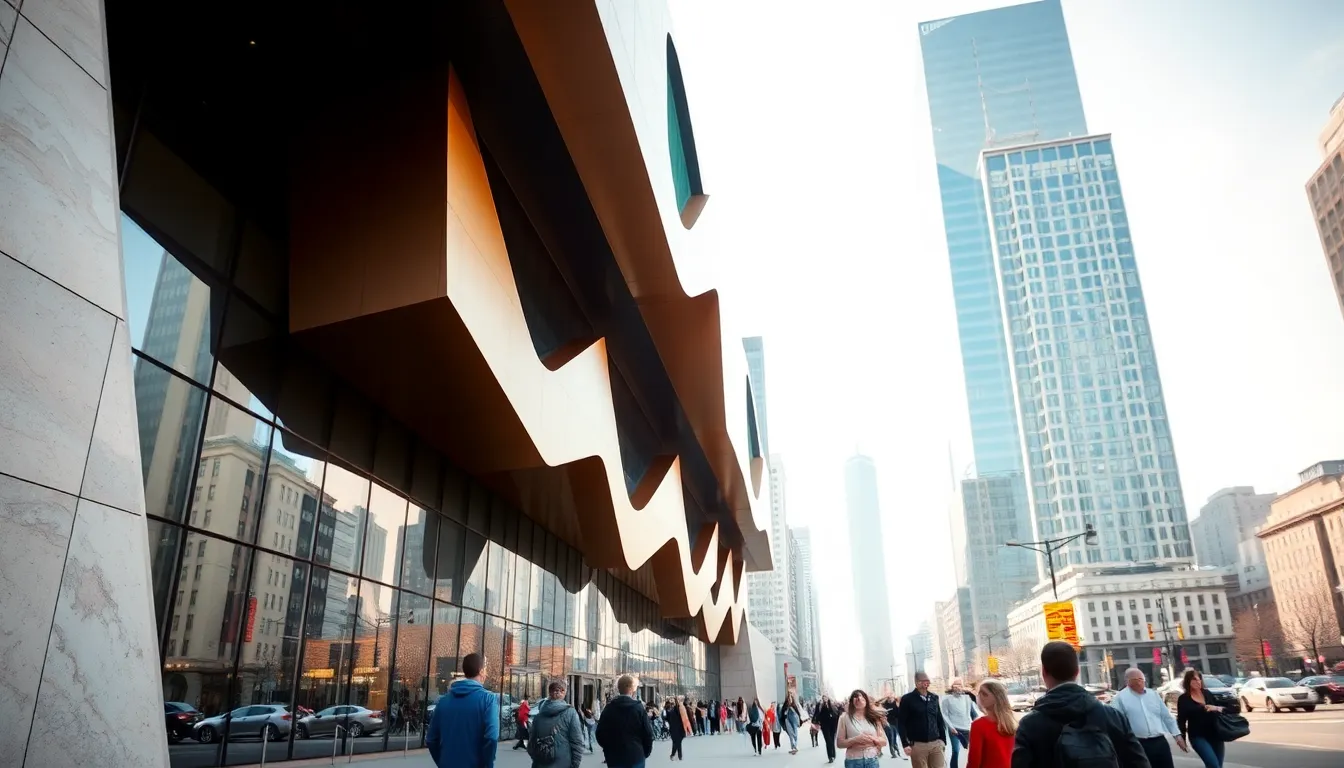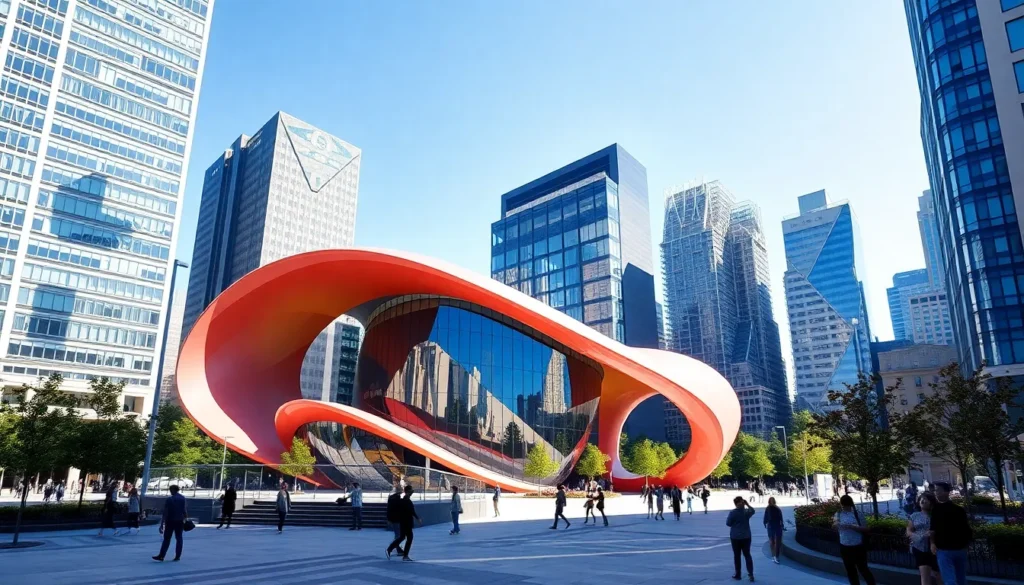Table of Contents
ToggleImagine walking through a city where buildings don’t just house people but also tell stories that defy traditional forms. Welcome to the intriguing realm of abstract architecture. This isn’t just about funky shapes and unusual colors: it’s a bold movement that challenges our perceptions of space and form. If you’re ready to explore an architectural style that pushes boundaries and sparks debates, you’re in the right place. Let’s take a closer look at what abstract architecture really means – and trust us, it’s more than just a pretty facade.
What Is Abstract Architecture?

Abstract architecture represents a departure from conventional design principles. It emphasizes non-linear forms, playful geometries, and often, an emotional connection to space. Unlike traditional architecture that focuses on functionality and practicality, abstract architecture invites viewers to experience spaces on a more visceral level. It often seeks to challenge the ordinary: the aim is to inspire wonder. Here, beauty can be found in asymmetry, and narratives can emerge from the chaos of shape and structure.
This approach isn’t just a fleeting trend: it captures the human imagination in ways that practical design cannot. It encourages architects to consider how a building affects its surroundings and the emotions of the people within it. So, whether you’re gazing up at a twisting skyscraper or wandering through an irregularly shaped gallery, you’re encountering the world of abstract architecture.
Key Characteristics of Abstract Architecture
Emotional Engagement
One hallmark of abstract architecture is its ability to evoke emotions. Architects design with intention, guiding people through a journey of feelings. The flow of space, the play of light, and dynamic contrasts create atmospheres that resonate within visitors.
Organic Forms
Unlike rigid lines and predictable shapes, organic forms dominate abstract architecture. These structures embrace curves, mimicking nature’s randomness. They often challenge our perceptions of stability and normalcy, inviting curiosity.
Innovative Materials
Abstract architecture frequently utilizes cutting-edge materials that defy traditional building boundaries. From glass to metal composites, these innovations empower architects to bring abstract visions to life. They unlock aesthetic possibilities that transform standard designs into something extraordinary.
Cultural Reflections
Finally, abstract architectural designs often reflect cultural narratives or philosophical musings. They become an expression of societal values, positioning themselves as icons within the urban landscape. Far more than mere structures, these buildings engage in conversations about identity and belonging.
Historical Context of Abstract Architecture
Abstract architecture didn’t just emerge from nowhere: it has roots entwined with various artistic movements. The influence of Cubism, for instance, popularized fragmented forms, paving the way for the avant-garde designs that emerged later. This style blossomed in the late 20th century, inspired by the need for freedom in artistic expression. Architects began to experiment beyond the constraints of functionality, embodying ideas from movements such as Surrealism and Futurism.
Influential Abstract Architects
Pioneers of the Movement
Several architects significantly shaped the realm of abstract architecture. Zaha Hadid, known for her bold and futuristic designs, crafted spaces that feel almost liquid. Her structures often blend complex geometries with flowing lines, making them monumental pieces of art.
Another remarkable figure is Frank Gehry, whose deconstructivist approach turns buildings into sculptures. The Guggenheim Museum in Bilbao stands as a testament to his innovative vision: it defies conventional building forms and redefines urban space.
Notable Abstract Architecture Examples
When considering notable examples, one must mention the Heydar Aliyev Center in Azerbaijan designed by Zaha Hadid. This structure is celebrated for its free-flowing curves that lack any sharp angles. Similarly, the Dancing House in Prague, crafted by Gehry, exemplifies movement and fluidity in architecture. Both buildings have garnered international acclaim, serving as pivotal examples of how abstract architecture impacts urban identity.
Impact of Abstract Architecture on Modern Design
Shaping Urban Landscapes
Abstract architecture significantly influences modern design, encouraging a break from traditional aesthetics. Cities around the globe showcase stunning examples that invite exploration and interaction. Abstract buildings don’t merely fill space: they articulate identity within metropolitan contexts, emboldening communities.
Challenges in Abstract Architecture
But, the journey isn’t without hurdles. Abstract architecture often faces criticism for its impracticalities. Critics argue that these designs may prioritize aesthetics over functionality, leading to challenges in usability. Also, costs can escalate: crafting unconventional shapes and using specialized materials can strain budgets. Architects must navigate these conversations, balancing artistry with pragmatic design decisions.
Even though these challenges, abstract architecture remains at the forefront of modern design, encouraging creativity and innovation.
Future Trends in Abstract Architecture
What Lies Ahead?
The future of abstract architecture appears bright, with emerging technologies likely to redefine possibilities. As 3D printing, AI, and sustainable materials advance, architects will push boundaries like never before. We can expect a rise in structures that not only defy conventional designs but also address environmental concerns.
Also, the integration of smart technologies into architectural designs will lead to interactive spaces that respond to inhabitants. This responsiveness could revolutionize how people experience environments, making abstract architecture not only visually stunning but also functionally dynamic.
Community-Centered Design
Going forward, there’s a notable shift towards community-centered designs. Architects will increasingly focus on how their creations impact the communities they inhabit. Expect to see more projects that promote social interaction, inclusivity, and cultural narratives woven into the very fabric of urban landscapes.





